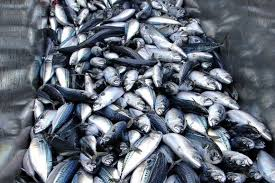Marine
MMO Meeting on Core Fishing Grounds, London 24th February
March 14, 2014 by Paul Stainer No Comments | Category Marine Directorate Science, Marine Renewables
Marine Scotland staff from Planning & Policy and Science divisions have attended a scoping meeting on the opportunities and challenges to using a ‘core fishing grounds’ approach in marine spatial planning organised by the Marine Management Organisation on the 24th of February. A range of fishing industry and governmental representatives across the UK have gathered in London for this one-day meeting to express their views on this approach.
The session began with Ruth Hoban from MMO introducing the context behind the core fishing grounds approach and current marine planning considerations of fisheries in England. Key points included the challenging task of agreeing to a commonly accepted definition of the “areas of greater importance for the fishing industry” (or core fishing grounds), and the benefits when using this approach of “shortening the odds” to offshore energy developers and accounting for fishing in the marine planning process. On the other hand, potential limitations included the weakening of areas outside ‘core grounds’, issues to account for variability and seasonality of the sector, and various data limitations.
Next, Suzannah Walmsley from ABPmer provided some details on how fisheries have been incorporated into international marine spatial plans. More specifically, Germany and the Netherlands have not defined any spatial policy for fisheries in their marine spatial plans, the Belgians have included a general policy on ‘preservation of current fishing grounds’ and also defined areas where fishing cannot take place. Norway has incorporated maps of the most intensively fished areas and defined an area where the Norwegian inshore fishing fleet is active. Finally, reference to the Scottish National Marine Plan and Shetland marine spatial plan included recent work on VMS analysis, ScotMap, and current project on nursery and spawning grounds.
The second part of the meeting included discussions between the participants which concluded to the following key issues in regards to this approach:
- Defining core fishing grounds and deciding on the value to be used (economic/ social/ ecological values etc.) is challenging. Issues might emerge with the different levels of protection and with the areas outside core grounds.
- Data issues: availability, treatment and ownership of the data could constraint this approach. There was reference to the limited data availability of the under 15 vessels. Solutions proposed were inshore VMS with references to Succorfish pilot in Pentland Firth and Orkney Waters and ScotMap projects.
- Variability of the sector and flexibility of the approach are key considerations. This led to key questions on scales used, frequency of the review, and different applicability for different sectors. A combination of layers with multiple thresholds (e.g. areas of 70%, 80%, 90% of the fishing activity included) was the most favourable option by the participants. This will provide flexibility for differ policy questions.
- The different distributions of the inshore and offshore fleets. It was noted that inshore fleets can be more reliant on smaller areas close to the shore.
- Finally, implementation was another discussion point and how this approach could be taken forward. A England wide approach coordinated by MMO and implemented by the fishing industry was the most favourable option.
Fishing intensity maps are currently used in Scottish marine planning with no distinct thresholds (e.g. 90% of activity etc) and have been sufficient so far. However, providing complementary layers following the proposed methodology could provide useful spatial layers for a non-technical audience. A detailed report on the main conclusions of this meeting will be put together and circulated by MMO by the end of March 2014.
Article by Andronikos Kafas



Leave a comment